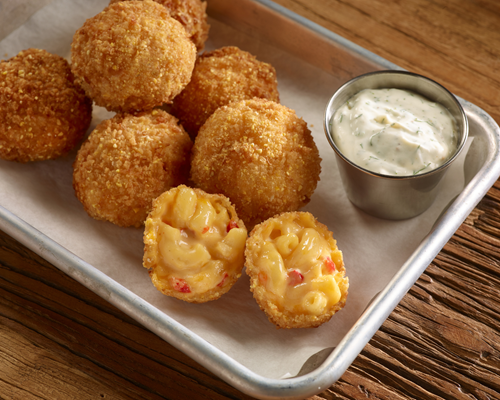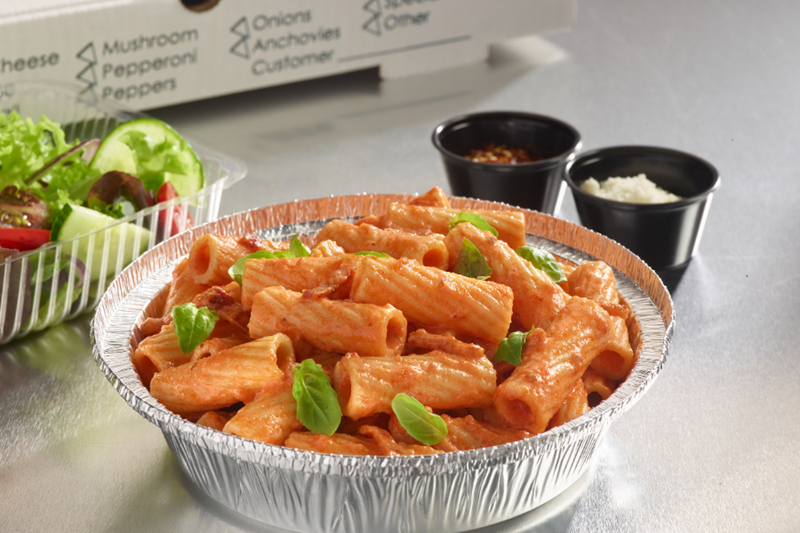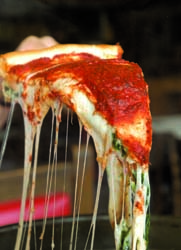 Professional tennis star Andre Agassi used the catch phrase, “image is everything” when appearing in television spots for Canon.
Professional tennis star Andre Agassi used the catch phrase, “image is everything” when appearing in television spots for Canon.
The same can be said for certain investments made by restaurateurs, such as upgrading a restaurant’s lobby area. While it can be difficult to gauge the return on investment, a lobby upgrade can be effectively done for a minimal cost — and it can go a long way toward further improving the restaurant’s brand.
Lobby upgrades are generally made for two reasons. The first is to provide customers with a more comfortable or interesting environment when they are picking up food or waiting for a table. The second is to create a different brand, one that often may resonate with a more upscale clientele.
The value of upgrading a restaurant’s lobby depends largely on customer demographics, says Michelle Bushey, partner and creative director of Vision360, an architectural and design firm in Dallas that specializes in designing interiors for restaurants internationally.
In the last 12 to 18 months, as the country’s recession has begun to take hold, the restaurant industry has witnessed two significant trends: a scaling down of consumer dining habits, and more emphasis for families on eating meals together, Bushey claims. As a result, the redesign of many lobby interiors has included a “fast, but casual” atmosphere that includes more comfortable seating and a “lounge” setting.
For restaurants with dine-in seating, Bushey recommends having a “to-go” area that targets takeout customers and allows them to receive and pay for their orders in a more efficient, timely fashion. That separate podium or designated “to go” area can help cut down on the number of customers waiting in the lobby area, reducing the need for additional seating.
However, Bushey does recommend that dine-in restaurants include at least four to six seats for customers who are waiting for a table or take-out order. For many customers, the key may be quality over quantity when it comes to such seating.
“It is always going to be hard to quantify the value of a more comfortable and inviting lounge area, but those restaurants that incorporate comfortable seats or sofas rather than hard benches may see an increase in customer satisfaction for those customers who do have to wait,” Bushey said. “It can make a wait seem not as long.”

Vitello’s Italian Restaurant in Studio City, California, may not have a large lobby area, but ownership has made a concerted effort to make the lobby an attraction in its own right. On the left-hand side of the lobby is a colorful wall plastered with nearly 500 autographed celebrity photographs. This wall invariably draws a crowd, even in the midst of Los Angeles’ Hollywood area, says Vitello’s Manager Craig Warner.
On the right side of the lobby is an impressive array of wine racks that hold hundreds of bottles of wine and contain information about some of the restaurant’s unique selections. And when customers fi rst enter they are greeted by a suspended, life-size wax figure of a “thinner” Marlon Brando that was purchased at a local auction several years ago.
“We’re trying to bring a Hollywood feel to our restaurant and when customers fi rst walk through our doors they get the feeling that this is a place where many stars have eaten over the years,” Warner said.
While Pronto Pizza in the New York City market may not have a “Hollywood” feel to its lobby area, owner John Porcello did invest in some structural and non-structural upgrades within the last two years to his Broadway location. These investments have given the pizzeria more of an upscale feel. Porcello feels that these upgrades make sense because many of his customers are upper class executives from some of the best-known employers in the Big Apple. Many of them stop in for a quick lunch, just a short walk from their Manhattan offices.
“It’s obviously important to have a clean atmosphere but we wanted to give our customers something different,” he says.
That “difference” includes smoked mirrors, brass lighting and more white light, new tile and brighter colors on the walls. It also included some artwork of pizza and Italian food. These lobby upgrades “weren’t too expensive” according to Porcello, but they did achieve their intended impact — getting rid of sterile lobby seating and replacing it with some warmth.
As part of the upgrades, Porcello also added a full-size glass window where onlookers from the busy sidewalk can watch pizzas and other menu items being made.
Best of all, Porcello says his Broadway location achieved higher sales of a few percentage points after the lobby upgrades were completed in 2007. For him, the image is one of a more upscale pizzeria that attracts customers of all demographic and socioeconomic backgrounds.
“It’s the little things that make a difference,” Porcello says. “We wanted to add some class given the area where (that location) is.”
Showing off an impressive lounge area can increase customer loyalty, something that Old Town Pizza in downtown Portland, Oregon, can attest to. For over two decades, the sit-down and take-out restaurant has given its customers a uniquely antique or vintage environment, one that is emphasized in its lobby area with plush vintage chairs, couches, coffee tables and artwork.
Since many employees at Old Town Pizza are local artists and musicians, their work is often displayed or publicized in the restaurant’s lounge. The entire restaurant also mimics this environment with original pieces of art and antique chairs scattered throughout the establishment.
Such an atmosphere, combined with a menu comprised of organic meals made from Oregon-grown products, has made Old Town Pizza a “must see” for local residents and out-of-town guests. But the brand of the restaurant is first emphasized from when the customer enters the lobby said General Manager Simon Carrillo.
“Customers often first come to see the atmosphere in the restaurant, but ultimately they’ll come back for the food,” he says.
The floors in Old Town’s Pizza lobby have been redone to include dark marble, while other areas of the restaurant are hardwood floors. Regular customer surveys prove that the restaurant’s environment is why the majority of its customers prefer to dine-in when possible. Such an environment is also why the restaurant has been featured in several local and regional publications.
“We offer our customers something different and the way our lobby is arranged has worked for us for many years,” Carrillo said. “We want to make coming to Old Town more than a meal, but an experience they want to have again.” ?
Mike Scott is a Michigan-based freelance writer who covers a variety of business-related topics.



